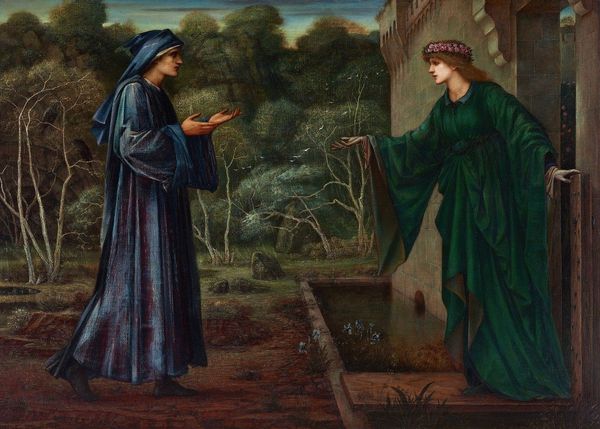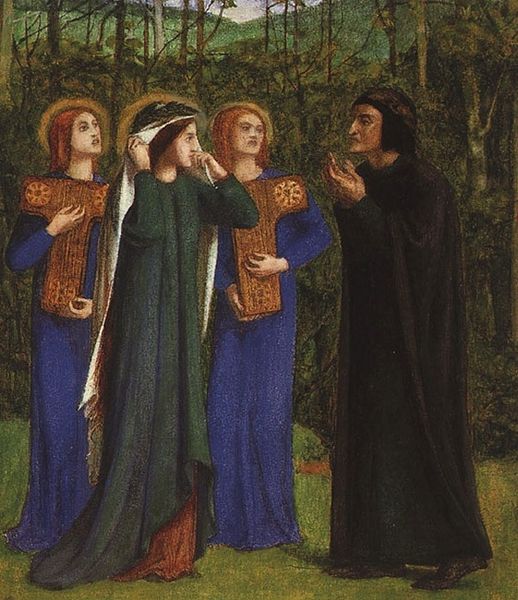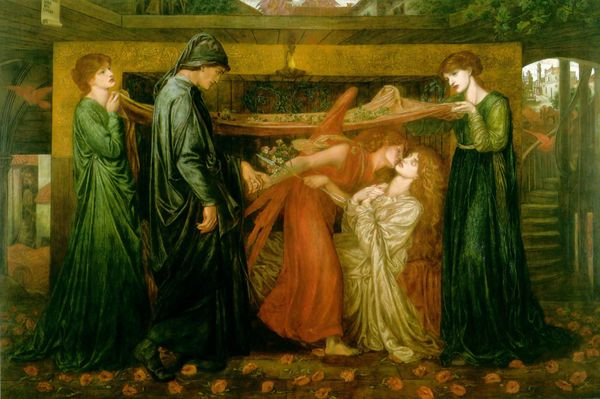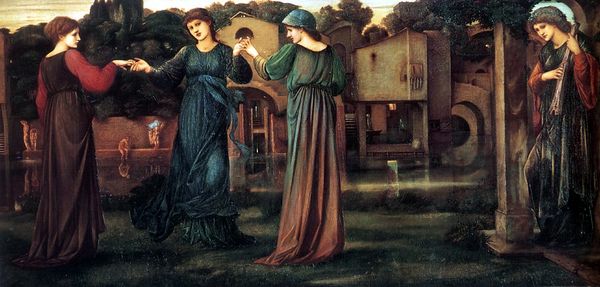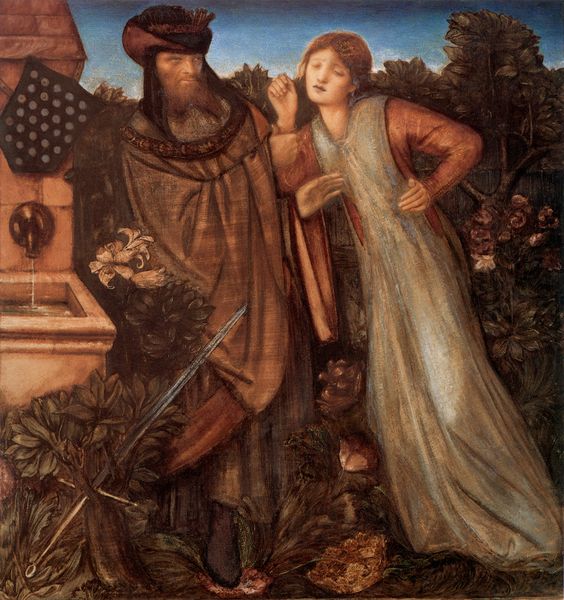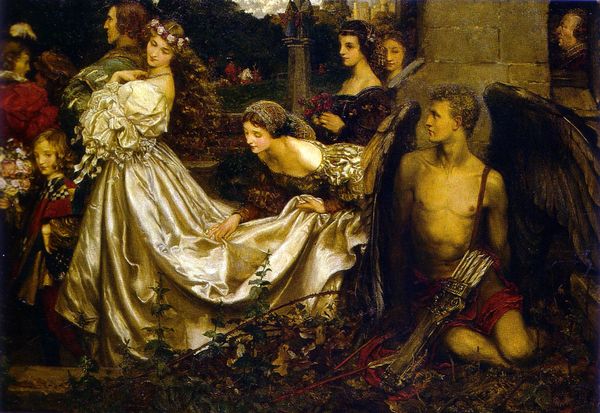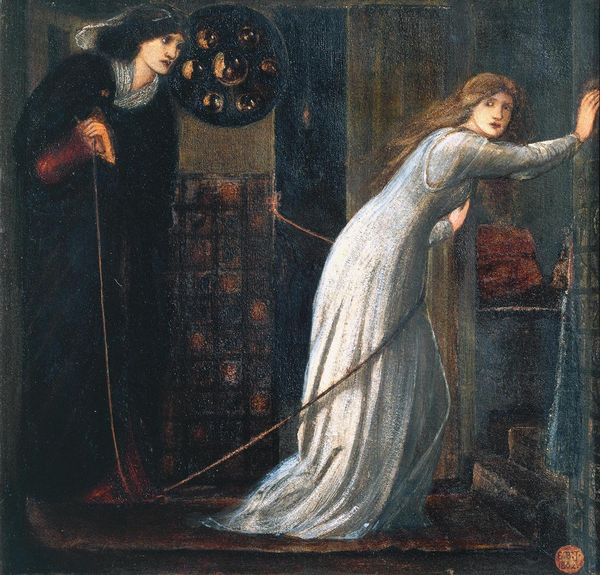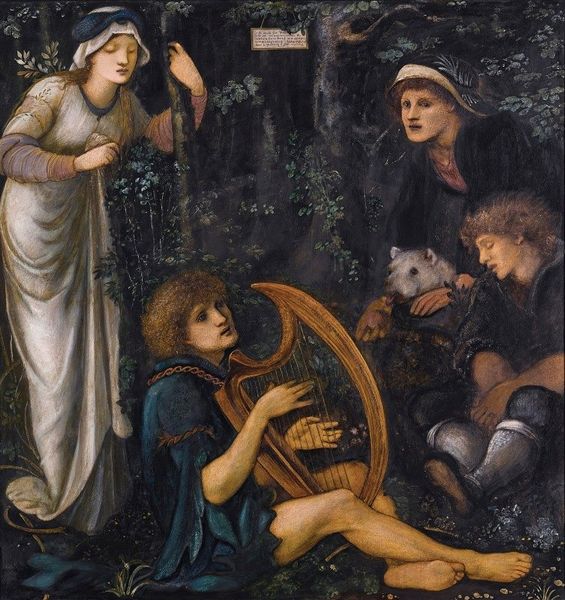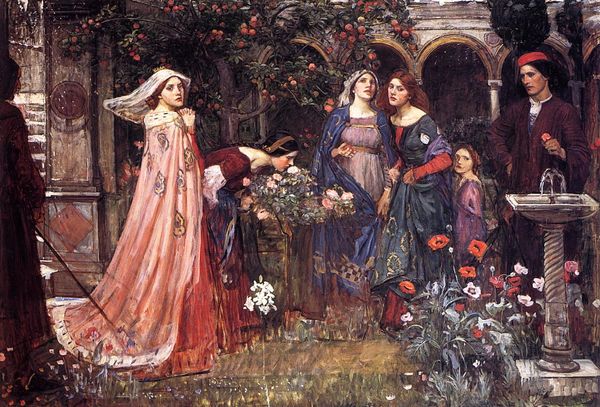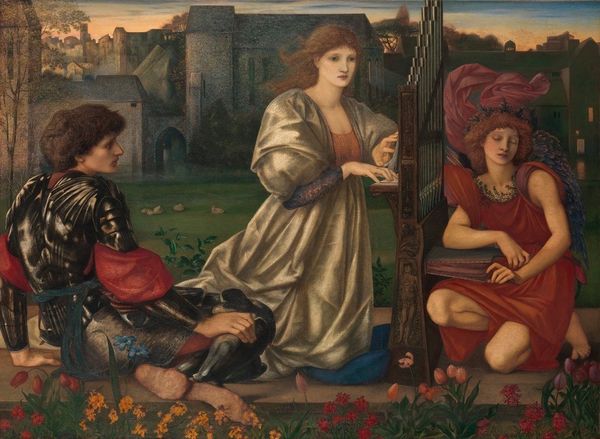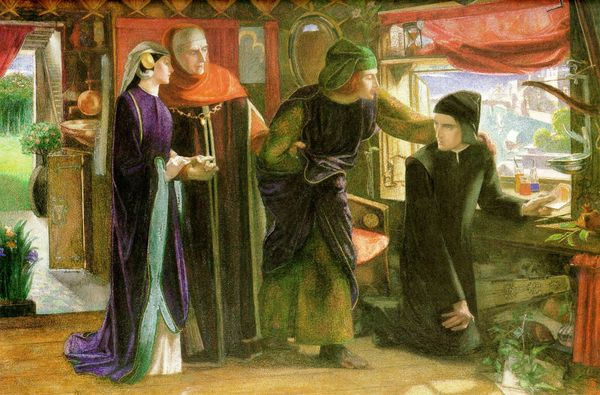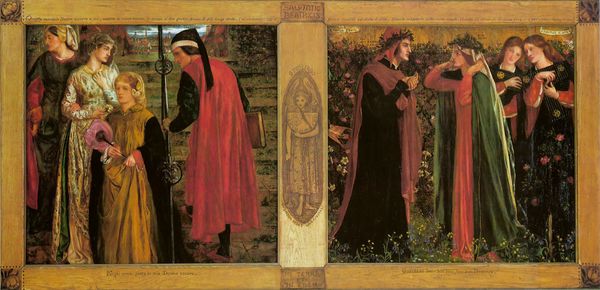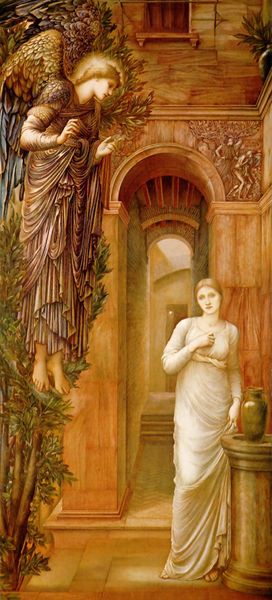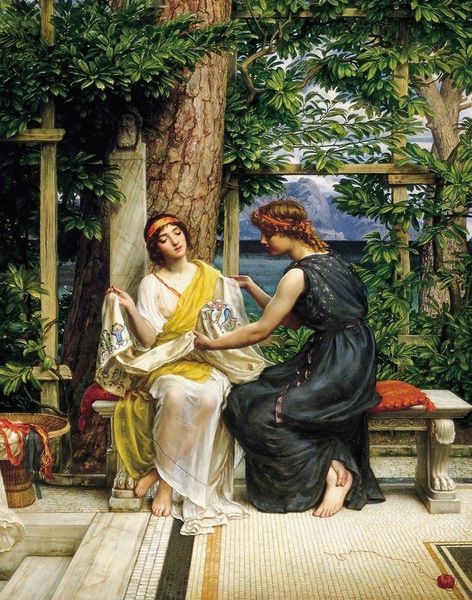
Copyright: Public domain
Edward Burne-Jones created this oil painting, Heart of the Rose, displaying the artist's approach to color, composition, and form. The painting is dominated by a palette of greens, blues, and earth tones, creating a melancholic yet harmonious atmosphere. Structurally, the composition guides our eye through a series of gestures and gazes, linking the figures in a rhythmic sequence. Note how the figures, situated in a contained garden, echo the structure of medieval allegories, yet are rendered with a distinctly modern sensibility. The figures' elongated forms and serene expressions hint at the influence of both classical and Pre-Raphaelite ideals, thus underscoring the painting’s concern with beauty and emotion rather than narrative clarity. The use of line, especially in the drapery and figures' contours, emphasizes a stylized elegance, characteristic of Burne-Jones' aesthetic. The painting functions as a semiotic system, where each element contributes to a web of meanings relating to beauty, spirituality, and the human condition, inviting the viewer to interpret the visual components and consider the cultural codes that informed its creation. Art does not have a singular, unchanging meaning, but is a site of ongoing interpretation and re-interpretation.
Comments
No comments
Be the first to comment and join the conversation on the ultimate creative platform.
